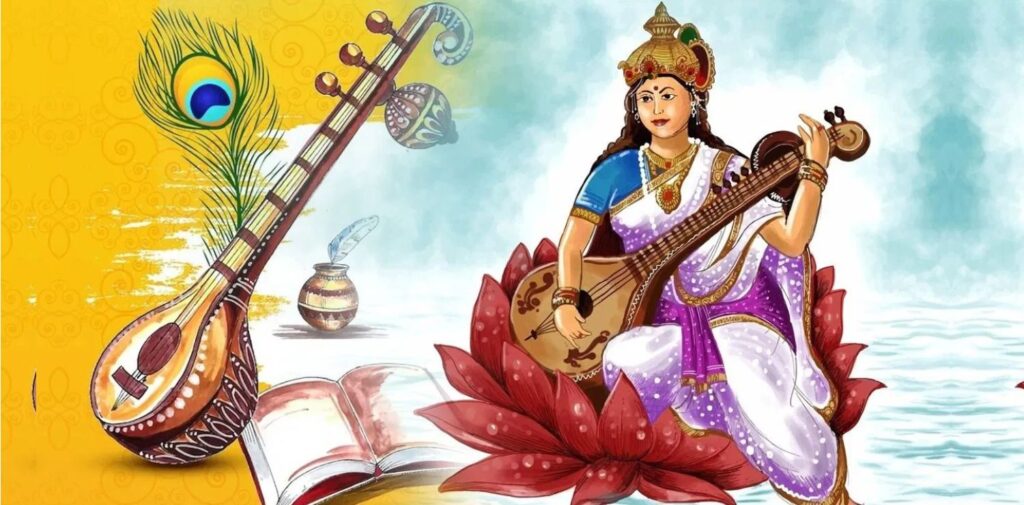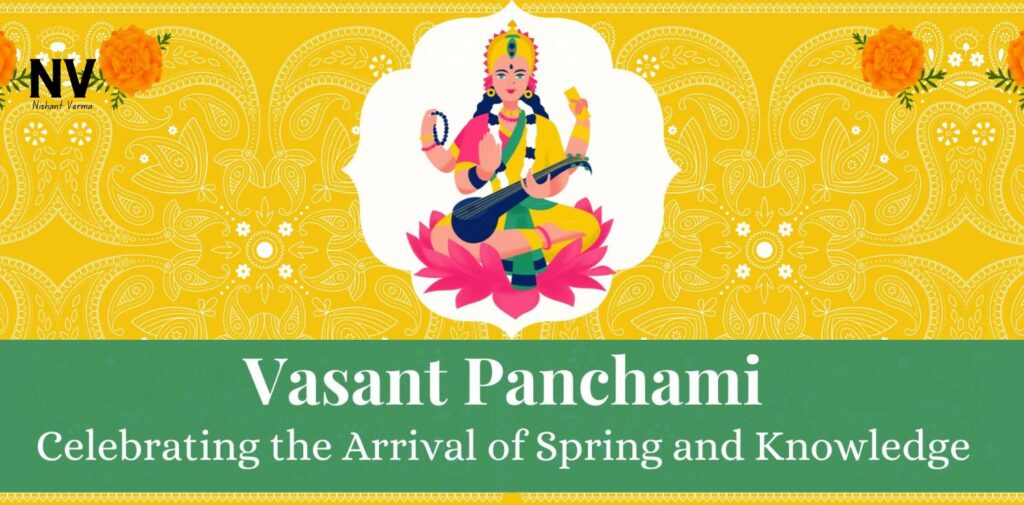Basant Panchami, also known as Vasant Panchami, is a vibrant and joyous festival that heralds the arrival of the spring season in India. Celebrated with much enthusiasm across different parts of the country, it holds deep cultural, spiritual, and seasonal significance. In 2025, Basant Panchami falls on January 31st. This festival, which falls on the fifth day of the bright half of the Hindu month of Magha, is dedicated to the worship of Goddess Saraswati, the deity of wisdom, arts, and learning. It is also associated with the blooming of mustard fields, vibrant yellow colors, and the onset of warmer days after a long, chilly winter.
The Significance of Basant Panchami
Basant Panchami marks the official beginning of spring in India. The word “Basant” means spring, and “Panchami” means the fifth day. The festival is observed with much zeal and energy, as it signifies the rejuvenation of life. Spring is a time when nature comes to life with a burst of colors, and people celebrate the season of renewal and growth.
In addition to its seasonal significance, Basant Panchami holds deep religious importance. The festival is dedicated to Goddess Saraswati, who is revered as the goddess of wisdom, knowledge, learning, and music. On this day, devotees seek her blessings to enhance their intellect and creativity. Schools, colleges, and educational institutions across India celebrate this festival by organizing special prayers and rituals for the goddess.
Basant Panchami also celebrates the joy of life and the bountiful harvest. The mustard fields, which are usually in full bloom during this time, cover the landscape with their golden yellow color, symbolizing prosperity and growth. The festival also marks the beginning of preparations for the Holi festival, as it sets the stage for upcoming celebrations.

Historical and Mythological Origins of Basant Panchami
The roots of Basant Panchami can be traced to ancient Hindu mythology and cultural traditions. One of the most popular legends associated with the festival involves the story of Goddess Saraswati. According to mythology, Goddess Saraswati was born on this day, and the day is celebrated in her honor. As the goddess of knowledge, music, and art, she is believed to be the one who imparts wisdom to her devotees. On Basant Panchami, people worship her with great reverence, offering her prayers and flowers.
The association of Basant Panchami with spring is also reflected in the mythological stories. It is believed that when Lord Shiva and Goddess Parvati’s son, Lord Kartikeya, defeated the demons, the world rejoiced, and the season of spring began. This victory of good over evil and the arrival of spring was celebrated with immense joy and festivity. Over time, the day evolved into a celebration of nature’s bounty and the rejuvenation of the Earth.
Worship of Goddess Saraswati
On Basant Panchami, the primary focus of worship is Goddess Saraswati. She is depicted as a beautiful woman dressed in white, sitting on a swan, with a veena (musical instrument) in her hand. She is the goddess who symbolizes purity, wisdom, and knowledge. Devotees, particularly students and scholars, pray to her on this day to seek her blessings for success in their academic and artistic pursuits.
The worship of Saraswati on Basant Panchami is widely observed in schools, colleges, homes, and temples. On this day, people place their books, musical instruments, and other learning tools near her idol or picture and offer flowers and fruits. Many students consider this day auspicious for initiating their studies or beginning new academic projects.
In many households, the tradition of “Saraswati Puja” is followed, where the goddess is invited into the home with prayers and offerings. The rituals are simple and include chanting mantras, lighting incense, and offering flowers to the goddess. In some parts of India, people also observe a tradition of placing their books and educational materials on an altar and performing the puja to seek blessings for success in exams and future endeavors.
The Celebration of Colors: Yellow and Mustard
Basant Panchami is also known for its vibrant color theme. The color yellow is considered sacred on this day because it symbolizes the brightness of knowledge and the warmth of the sun. Mustard fields, which bloom during this season, paint the landscape in a brilliant yellow hue, making the entire environment feel lively and full of energy. This yellow color is reflected in the clothes that people wear during the festival, as they often don bright yellow garments to celebrate the occasion.
In some regions of India, especially in Punjab and Haryana, people celebrate this festival by wearing yellow turbans or other yellow clothing. This tradition symbolizes the arrival of spring and the energy that comes with the new season. In many places, people also decorate their homes and temples with yellow flowers, further enhancing the festive atmosphere.

Celebrating Basant Panchami in Different Regions
While Basant Panchami is celebrated across the country, different regions have their unique ways of observing the festival.
- In Punjab and Haryana: Basant Panchami is celebrated with great enthusiasm and is often associated with the kite flying festival. People gather on rooftops and compete in flying kites, as the skies are clear and perfect for kite flying during this time. The festival is a symbol of freedom, fun, and the spirit of togetherness. The yellow fields of mustard plants further add to the festive mood.
- In West Bengal: In Bengal, the day is celebrated with Saraswati Puja, and students place their books and pens near the goddess’s idol to seek her blessings. The people also wear yellow clothes and distribute sweets. The day is marked by cultural performances, including music, dance, and poetry, to honor the goddess of arts and culture.
- In Uttar Pradesh and Bihar: Basant Panchami is celebrated by performing Saraswati Puja at homes and educational institutions. People make special offerings to the goddess and sing devotional songs. The festival is also an occasion for people to come together and celebrate the beauty of spring.
- In Gujarat: Basant Panchami is celebrated as Vasant Mahotsav, which includes music, dance, and traditional folk performances. Many people also visit temples dedicated to Goddess Saraswati to offer prayers.
- In South India: While Basant Panchami is not as widely celebrated in the South, the worship of Goddess Saraswati is a prominent feature of the festival, especially in states like Tamil Nadu and Karnataka. Schools and educational institutions organize special pujas for students and teachers.

Why is Basant Panchami Important?
Basant Panchami is more than just a festival; it is a reminder of the cyclical nature of life. It reminds people of the importance of knowledge, the beauty of nature, and the power of growth and transformation. The festival marks the end of the cold winter and the beginning of the warm and vibrant spring, symbolizing renewal, hope, and optimism.
It is also a celebration of the importance of learning and the value of education. With the worship of Goddess Saraswati, Basant Panchami emphasizes the need for wisdom, creativity, and intellectual growth. It is a day for students, teachers, artists, and musicians to come together and seek divine blessings for their academic and creative endeavors.
Conclusion
Basant Panchami is a joyous occasion that brings people together to celebrate the arrival of spring and to honor the goddess of wisdom and knowledge, Saraswati. With its vibrant colors, cultural traditions, and spiritual significance, it is a festival that unites communities across India. Whether through prayers, cultural performances, or the simple act of wearing yellow and enjoying the beauty of nature, Basant Panchami is a celebration of life, learning, and the eternal cycle of seasons.




